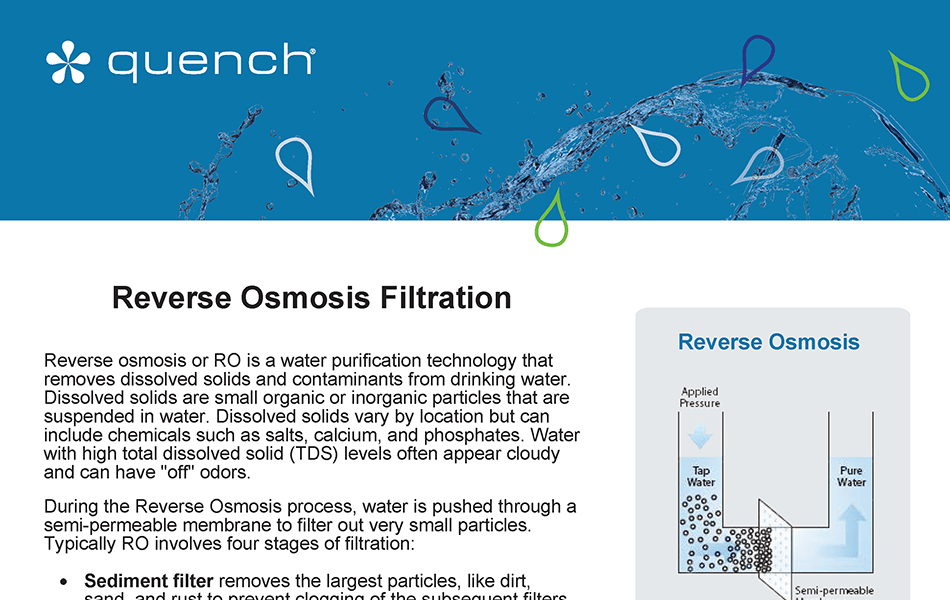Download RO Filtration Information Sheet
Reverse osmosis or RO is a water purification technology that removes dissolved solids and contaminants from drinking water. Dissolved solids are small organic or inorganic particles that are suspended in water. Dissolved solids vary by location but can include chemicals such as salts, calcium, and phosphates. Water with high total dissolved solid (TDS) levels often appear cloudy and can have “off” odors.
During the Reverse Osmosis process, water is pushed through a semi-permeable membrane to filter out very small particles. Typically RO involves four stages of filtration:
- Sediment filter removes the largest particles, like dirt, sand, and rust to prevent clogging of subsequent filters
- Pre-carbon filter reduces organic compounds and chlorine
- Reverse Osmosis membrane reduces molecules heavier than water, such as sodium, high levels of lead, dissolved minerals, arsenic, chromium, bacteria, and fluoride
- Post-carbon filter refines the taste of the water using coconut carbon fibers
Who Needs Reverse Osmosis?
Excessive TDS can be harmful to humans, which is why the EPA generally considers drinking water with a TDS level below 500 parts per million (ppm) safe to drink. We have found that water with TDS over 250 ppm often tastes metallic, salty, and even bitter. As such we recommend RO filtration for those with TDS levels over 250 ppm and require it for customers who rely on potable well water or whose tap water exceeds TDS levels of 300 ppm.
Which Quench Machines are Equipped With Reverse Osmosis?
All Quench water coolers and ice dispensers can be equipped with reverse osmosis filtration. Note that in the case of pressure-fed water coolers (as opposed to gravity-fed units), reverse osmosis filtration requires an additional pump. Also, note all RO-equipped machines require a drain line.

